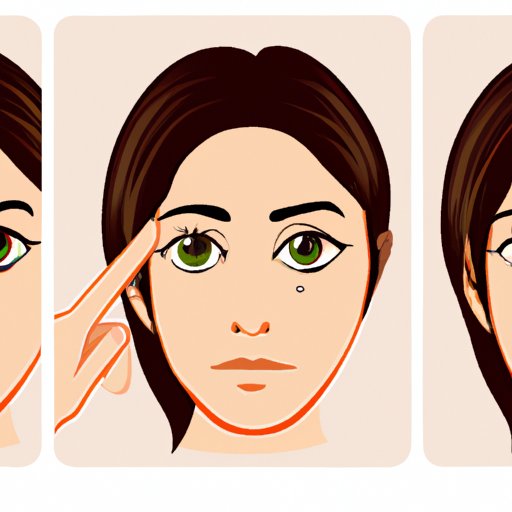
Introduction
Eye stye is a common eye condition that can cause inconvenience, discomfort, and irritation. It is essential to know how to treat it promptly and effectively to avoid complications and prevent it from spreading. This article aims to guide you through various methods of getting rid of an eye stye, including natural remedies, over-the-counter treatments, medical treatments, prevention techniques, and more.
Causes of Eye Styes
An eye stye is a bacterial infection that affects the gland at the base of the eyelash. The primary cause of an eye stye is Staphylococcus, a type of bacteria that can thrive on the skin’s surface. Other possible causes include poor hygiene, rubbing the eyes with dirty hands, sharing towels, or using contaminated eye makeup products. Understanding the causes can help prevent eye styes from occurring in the first place. It is essential to maintain good eye hygiene by washing your hands regularly and avoiding touching your eyes unnecessarily.
Natural Remedies for Styes
If you’re looking for a natural remedy to treat an eye stye, some treatments may be effective. One popular home remedy for an eye stye is a warm compress. Applying a warm compress to the affected eye can help reduce inflammation and encourage the stye to drain. You can also use tea bags or a cotton swab dipped in lavender or tea tree essential oil to alleviate symptoms. However, it’s essential to ensure that these remedies are safe and free of adverse effects before using them.
Over-the-Counter Treatments
There are various over-the-counter treatments available for an eye stye. Topical ointments or eye drops containing antibiotics or steroids can help reduce inflammation and kill bacterial infections. Pain relievers or non-steroidal anti-inflammatory drugs (NSAIDs) can also help alleviate pain and discomfort. It’s crucial to choose the right product for your specific case and only use products recommended by your doctor or pharmacist.
Medical Treatments
For more severe cases of an eye stye or one that does not heal with home remedies or over-the-counter treatments, your doctor may recommend medical treatment. One such option is an incision and drainage procedure. This outpatient procedure involves making a small cut on the stye and draining the pus and debris inside. If the stye does not respond to antibiotics or incision and drainage therapy, oral antibiotics may be necessary. It’s vital to adhere to your doctor’s instructions and avoid self-treatment with medically prescribed treatments.
Prevention Techniques
Prevention is essential for those who suffer from recurrent styes. Simple measures such as keeping your hands clean, not sharing makeup or eye products with others, and cleaning your eyeglasses regularly can reduce your risk of developing an eye stye. It’s also vital to practice good eye hygiene, such as not touching your eyes unnecessarily and regularly washing your face and eyelids with warm water or a mild cleansing solution.
Stye vs. Chalazion
Eye stye and chalazion are often mistaken for each other as they have similar symptoms. However, they are different conditions with distinct causes. An eye stye is an infection of the eyelash hair follicle, while a chalazion results from a blocked oil gland. A chalazion tends to develop gradually and is usually painless. If you’re unsure which condition you’re experiencing, it’s important to see an eye doctor for diagnosis and treatment.
When to See a Doctor
While many cases of an eye stye can be treated at home or with over-the-counter products, there are instances when you should see a doctor. If your symptoms worsen, your vision is affected, or if the stye becomes larger or more painful, medical attention is necessary. An eye doctor can examine your eyes, diagnose the condition, and recommend appropriate treatment. It’s recommended to prepare for your doctor’s visit by bringing a list of any medications you’re taking, your medical history, and any allergies you have.
Conclusion
Eye stye is a common condition that can cause discomfort and irritation. Fortunately, there are various ways to treat it, from natural remedies to medical treatments. Keep in mind the importance of maintaining good eye hygiene and following prevention techniques to reduce your risk of developing an eye stye. If you’re experiencing any symptoms, don’t hesitate to seek medical attention from a trusted medical professional.




